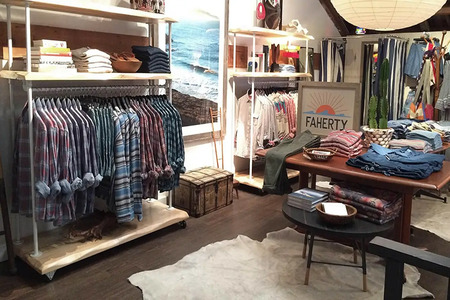Kyrgyz garment industry sees great opportunity for development in the Customs Union
YarnsandFibers News Bureau 2014-11-27 11:00:00 – BISHKEKThe Customs Union countries including Kazakhstan, Russia and Belarus to introduce a system of marking products that means products imported to Kyrgyzstan from China, during their future re-export to Russia, will be qualified as Chinese. Such goods will be withdrawn from the market, and sellers will have to pay significant fines said, advisor to the Russian President on Eurasian integration Sergey Glazyev.
Regardless of whether Kyrgyzstan will enter the Customs Union and Eurasian Economic Union or not, it should move from the re-export of Chinese products to the development of its own clothing industry. Kyrgyzstan occupies about 6% of the Russian market of readymade garments.
In fact, Kyrgyzstan could become a monopoly in the garment industry in the Customs Union as sewing products made in Kyrgyzstan are of high quality and affordable prices. Working within the Customs Union will give Kyrgyzstan's sewing industry an opportunity to further develop, according to the Russian expert.
The Kyrgyzstan sewing industry officially employs more than 150,000 people. Export of apparel products is one of the most important sectors of the Kyrgyz economy. More than 90% of the products labeled "Made in Kyrgyzstan" are exported to Russia, Kazakhstan and other CIS countries.
Due to the improved taxation system, the garment industry is developing dynamically, but it can further expand production and launch new enterprises.
According to the Association of Light Industry of Kyrgyzstan (Legprom), last year 70 percent of raw materials, fabrics, and accessories for the Kyrgyz sewing industry were imported from China.
According to a Chinese delegation that recently visited Kyrgyzstan, currently China's garment production becomes unprofitable, and they are willing to invest in the garment industry in Kyrgyzstan.
Textile and garment industry is a priority sector of economy with high export potential, said Kyrgyz Economy Minister Temir Sariyev at a meeting with the Chinese delegation that included representatives of state bodies and textile and garment producers.
China is one of the strategic investors of Kyrgyzstan. Foreign direct investment of China to Kyrgyzstan amounted to $454.5 million in 2013, and it tends to increase.
China is also one of the main trade partners and ranks second in the total trade turnover after Russia. Since the beginning of 2014, trade between Kyrgyzstan and China has grown 8.5% compared to the same period of 2013.
According to the China National Textile &. Apparel Council (CNTAC), China is interested in the textile industry of Kyrgyzstan. The delegation examined the situation in the textile industry, the investment climate, and the share of exports.
China's textile production is mainly located in the east, but the government plans to develop the western part of the country, in particular Xinjiang. As Kyrgyzstan is the neighboring country, China intends to export its goods through Kyrgyzstan to the CIS and other countries.
China has to import textiles, as its own resources do not provide the demand. Due to the growth of tariffs for water and electricity, China has to shift its production to the countries of Southeast Asia.
According to the Legprom Association, Kyrgyzstan annually produces about 10,000 tons of wool, but only about 30% of the total volume is thin and semi-light wool. The remaining 70% is rough and semi-coarse wool, and it is not in demand. Therefore, Kyrgyzstan is very interested in attracting Chinese technology to coarse wool processing.
Legprom has urged the Kyrgyz government to keep the patent system when joining the Customs Union because more than 80% of businessmen in small and medium business work with patents, the simplified tax system.
The Eurasian Economic Commission has agreed to provide Kyrgyzstan with these preferences, but it required confirmation that the sewing products actually were made in Kyrgyzstan.
To keep the patent system, and to develop technical regulations for the light industry Kyrgyz sewers at first called the government to provide tax incentive for five years. But later on studying the situation refused tax preferences, and urged to abolish the customs posts on the Kyrgyz-Kazakh border in order the goods would not stay long there.
Kyrgyz garments producers strongly believe that entry into the CU will be profitable for them.
In 2012 the Kyrgyz sewing industry manufactured products worth $182 million, and in 2013 - $142 million.
Market Intelligence
Ask for free sample Report

experience
Customer Base
dedicated team
Countries Served Worldwide









